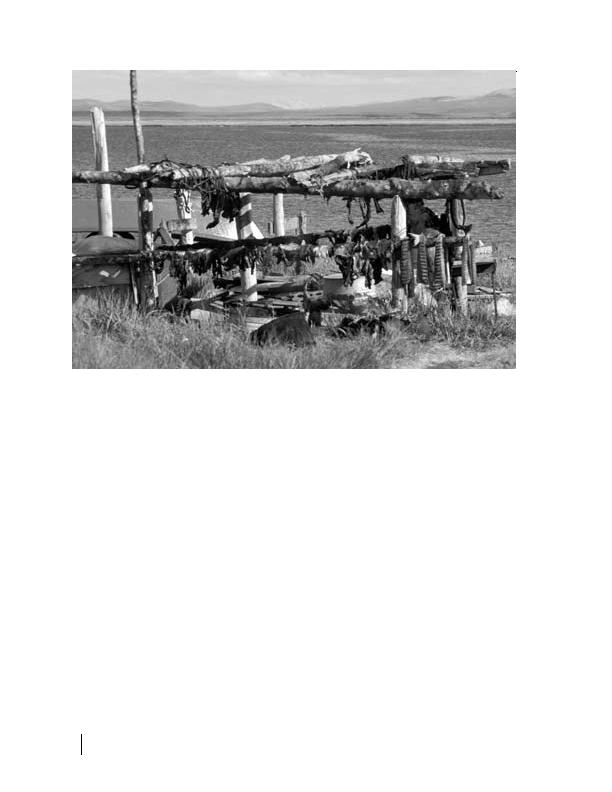
Fish drying in open air in Alaska
To have informed choices about foods, Alaskans
Alaska Traditional
have requested more information about the
Diet Project
risk from these exposures and the nutritional
Food and dietary practices of Alaska Natives
benefits of traditional foods. In collaboration
differ from those of the general U.S. population.
with Alaska Native organizations and others,
There are emerging concerns about the potential
the Alaska Traditional Diet Project will conduct
contaminant burden among Alaskans who eat
dietary surveys in rural communities where
subsistence foods. ATSDR's Alaska Traditional
there is concern about possible contaminants in
Diet Project, an effort begun in October 2000,
locally harvested foods.
was developed to assist consumers of Alaskan
During fiscal year 2002, the food frequency
traditional foods in making informed dietary
survey was conducted in 13 native villages
decisions to prevent adverse health outcomes.
in different Alaskan regions. Analyses of the
The project was developed in response to con-
dietary surveys and the nutritional benefits of
cerns about the effects of environmental con-
the foods results are anticipated to be avail-
tamination present in Arctic and sub-Arctic
able in January 2003. Also during fiscal year
regions. Many Alaskans worry that exposures to
2002, ATSDR made available additional funds
contaminants resulting from a subsistence life-
to support limited sampling and analysis for
style, or through commercial and recreational
contaminants in the traditional foods. Data on
activity, can potentially lead to cancer, worsen
hazardous waste point sources in these villages
existing conditions such as diabetes and asthma,
and the potential presence of global pollutants
and increase the incidence of other health prob-
are being evaluated to help determine which
lems.
potential contaminants should be considered
40 chapter 2


 Previous Page
Previous Page
